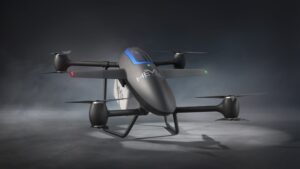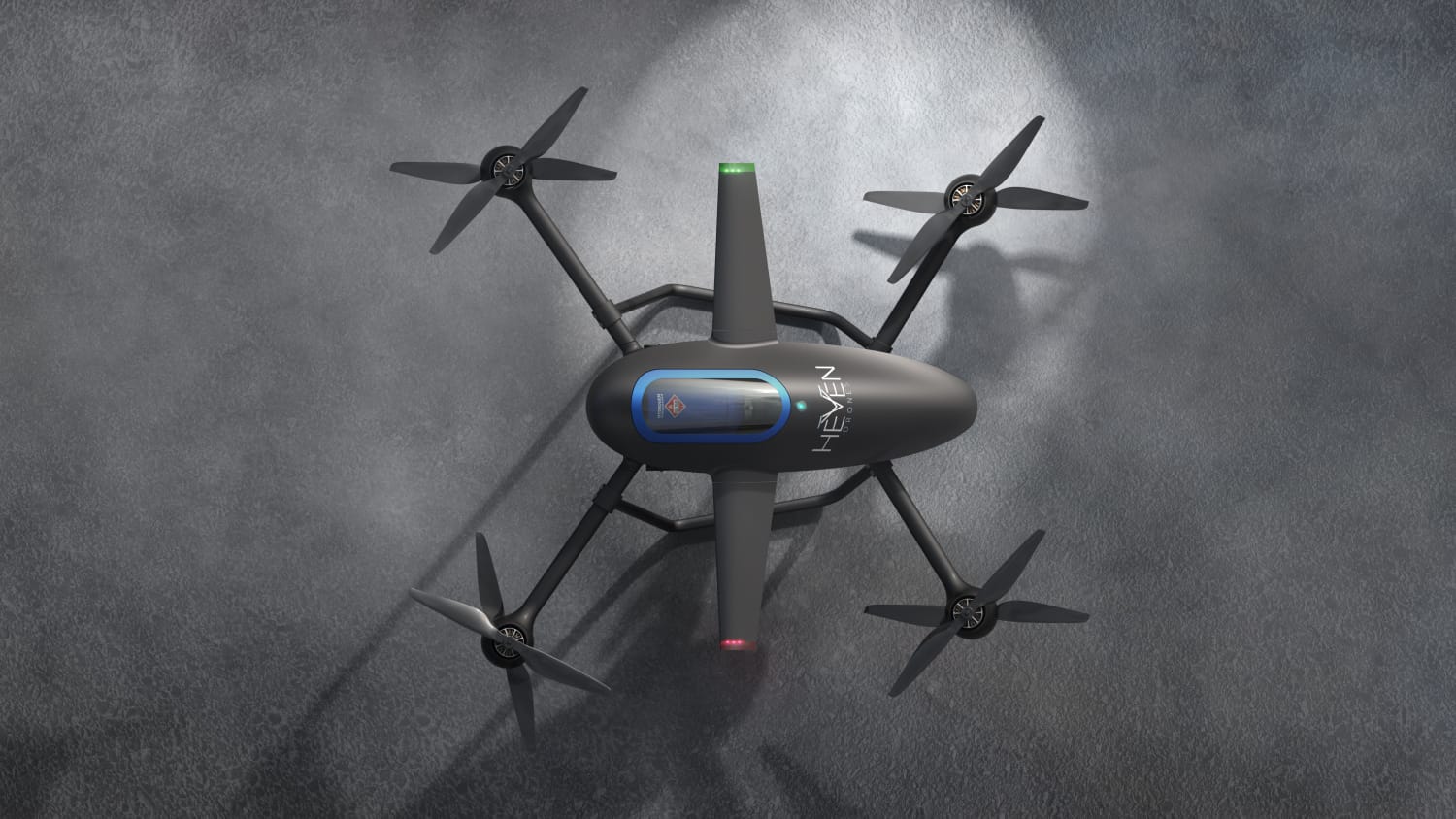
Battery or power source technology issues remain problematic for the drone industry. Commonly used Lithium Polymer (LiPo) batteries limit flight endurance, can be expensive to purchase and maintain, and can be dangerous when handled incorrectly. Additionally, LiPo batteries can be subject to supply chain disruptions and price variations. In this DRONELIFE Exclusive Op-Ed, Bentzion Levinson of Heven Drones makes the argument for hydrogen: and discusses the obstacles and opportunities that hydrogen power presents.
The following is a guest post by Bentzion Levinson, CEO and Founder of Heven Drones. DRONELIFE neither accepts nor makes payments for guest posts.
Continue reading below, or listen:
Why drones are the overlooked missing link to the clean hydrogen revolution
By Bentzion Levinson, Founder and CEO, Heven Drones
More than 30 regional proposed hydrogen energy projects around the United States are now competing for $7 billion in federal funding to help them bring to life this promising source of clean energy. Competition is fierce for this funding, which will help producers, distributors and users of clean hydrogen get their projects off the ground, providing another clean energy source amid ongoing efforts to reduce carbon emissions.
Because hydrogen produces only water when it is consumed as a fuel, it has long been considered a clean source of energy. But today, its use as an energy source remains limited due to the high cost of production, and limited hydrogen distribution networks. As policymakers and the energy industry seek to make hydrogen more affordable and more accessible, they should also be paying attention to another innovative sector—the drone industry— as a valuable partner and testing grounds for this new fuel. It is via drones that hydrogen can be efficiently scaled as a new technology, and become a mainstream fuel for vehicles, manufacturing, electricity production, and transform many other industries.
The emergence and potential of clean hydrogen fuel
More than 50 years ago, liquid hydrogen began fueling space exploration rockets, and now provides electricity for many uses aboard spaceships. But these uses of hydrogen—the most common element on earth— as a fuel and power source remain the exception. Today, hydrogen’s most common uses are not for energy but in processing petroleum, fertilizer and some food products.

Because hydrogen fuel cells produce electricity, they can also be used instead of traditional batteries to power electric vehicles; this is an especially attractive alternative as the world becomes more aware of the negative toll that producing and disposing of batteries takes on the earth. Many of the inputs, including minerals like lithium and cobalt, needed for batteries must be obtained overseas, often requiring cooperation with corrupt governments and a reliance on underpaid and ill-treated laborers. Hydrogen, on the other hand, offers an advantage in that it can be produced domestically and with a more limited environmental footprint.
Challenges for hydrogen in the energy market
While hydrogen has great potential as a clean energy source, it also faces many challenges. Hydrogen fuel cells are expensive to produce and operate. There is no existing infrastructure for easily refueling hydrogen-based electric vehicles. In addition, hydrogen must also be stored and transported carefully; when hydrogen leaks into the atmosphere, it has severe warming effects, contributing to climate change. In order to advance the use of hydrogen, including in drones, these challenges must also be overcome. But there is hope.
How drones can pave the way
Drones have the potential to play an outsized role in the clean hydrogen revolution when it comes to both adoption and scalability. The hydrogen fuel sector should be looking to increase its cooperation with drone-makers, not just for the opportunities in this market, but in order to use drones as a test case for developing and proving the capabilities of hydrogen fuel cells in transportation in general.
Because drones use limited amounts of hydrogen, the relatively high fuel cost is not as significant of a factor as compared to the overwhelming benefits. Drones, for example, require far less fuel than cars or larger aerial vehicles. As in many technology adoption cycles, the best applications to help scale a technology are where the initially high costs can be tolerated. The drone market is a great example of this.
Because hydrogen fuel cells can hold more energy than batteries of the same size and weight, they offer an especially valuable advantage to the drone industry, which seeks to keep the weight of the drone as low as possible in order to carry larger payloads. This means that drone-makers have more economic and operational incentives to embrace hydrogen as a fuel. Because drones are still a relatively new and rapidly changing technology, drone developers are especially open to innovation and new design, making it easier to incorporate hydrogen fuel cells into drones than it is to build them into cars or other forms of mobility. It is very likely that before hydrogen powers other forms of mobility, it will power drones.
The drone sector can also be a valuable partner in developing the infrastructure for the production and distribution of cleaner, greener hydrogen. Like other sectors of the mobility and transportation industry, drone-makers and operators have a vested interest in reducing carbon emissions. That quest, along with their general openness to innovation, means that drone companies can contribute value to cooperative hydrogen energy projects, and should be on the radar of emerging hydrogen hubs and other initiatives.
Drones are already changing the transportation of goods, as well as other industries, like maintenance and inspection, as well as defense and security. By using hydrogen fuel cells, they can change the energy sector as well. The pairing of rapidly-growing drone tech with clean hydrogen can be a transformative catalyst not just for the transportation sector, which desperately needs to cut its carbon footprint, but can pave the way for the uses of hydrogen power in other industries.
Read more:
 Bentzion Levinson is the Founder and CEO at HevenDrones. A former military commander and Stanford Business School graduate, Bentzion is committed to driving meaningful change through technology. Bentzion led an expert team in a national project to detect and extinguish agricultural fires that were destroying farms across [Israel]. Bentzion founded HevenDrones in 2019 with the aim of creating an actionable drone ecosystem designed to optimize a wide range of industries, from emergency response, smart-cities and agriculture, to logistics, construction, defense, species conservation and beyond.
Bentzion Levinson is the Founder and CEO at HevenDrones. A former military commander and Stanford Business School graduate, Bentzion is committed to driving meaningful change through technology. Bentzion led an expert team in a national project to detect and extinguish agricultural fires that were destroying farms across [Israel]. Bentzion founded HevenDrones in 2019 with the aim of creating an actionable drone ecosystem designed to optimize a wide range of industries, from emergency response, smart-cities and agriculture, to logistics, construction, defense, species conservation and beyond.
Miriam McNabb is the Editor-in-Chief of DRONELIFE and CEO of JobForDrones, a professional drone services marketplace, and a fascinated observer of the emerging drone industry and the regulatory environment for drones. Miriam has penned over 3,000 articles focused on the commercial drone space and is an international speaker and recognized figure in the industry. Miriam has a degree from the University of Chicago and over 20 years of experience in high tech sales and marketing for new technologies.
For drone industry consulting or writing, Email Miriam.
TWITTER:@spaldingbarker
Subscribe to DroneLife here.
https://dronelife.com/2023/05/30/drones-and-the-clean-hydrogen-revolution-dronelife-exclusive-op-ed/
 Unmanned Aerial Vehicle The latest drone news
Unmanned Aerial Vehicle The latest drone news



